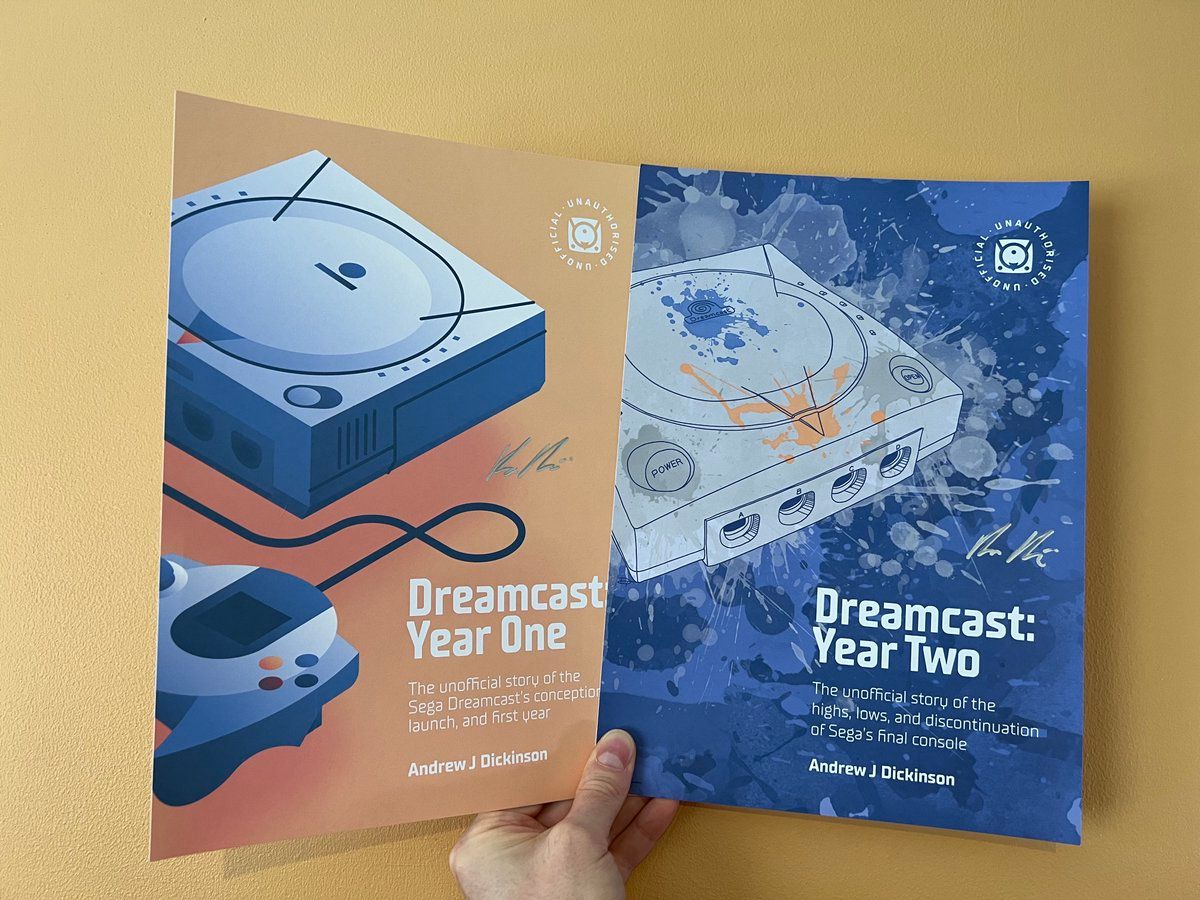Lessons I’ve Learned From Crowdfunding
The highs and lows of the crowdfunding revolution

Okay, I admit it. I’m a Kickstarter addict. To date, I have backed over 230 projects, mostly videogame-related. I was sucked in by the excellent-looking Massive Chalice from Double Fine, and although that was eventually released with very little fanfare, I didn’t stop there. I backed countless indie games, gaming publications, board games, card games, albums, books, comics, and tech products. And I still do to this day.
When it came to creating my own project, I knew that Kickstarter would be the place I would launch it. By the time of my first campaign (for my book Dreamcast: Year One) I felt like I knew the platform inside out. I had seen campaigns blossom and I’d seen them fail. I’d seen projects blast into the stratosphere, way beyond their initial estimations, and I’d also seen ones that failed to ever materialise, taking my hard-earned money with them. I could tell what was going to make a successful crowd funder, and what was going to ultimately fail to fund. It was like a gift.
I used this understanding of what worked and what didn’t to shape my own campaign, and the ones I have run since my initial 2019 effort. I’ve seen a whole lot of success, but I’ve also learned some very hard lessons along the way, and my journey is far from over. I thought it might be interesting to share some of those lessons here — perhaps it’ll be cathartic? Let’s find out I guess.
My very first campaign took almost an entire month to fund - this was possibly the most nerve-wracking month of my life. I had nothing to lose per se, as my artist and designer knew I couldn’t really give them any money unless we funded (though I had spent some of my own money to get some initial work done), but the thought of failing at the first hurdle filled me with dread.
I had recently come out of an incredibly depressive period in my life, and with the help of therapy had decided that I wanted to do more than just work 9-5 in customer service. I wanted to follow my passion, and I had always had a great passion for video games, specifically for the Dreamcast. I saw an opportunity to do something with that drive, and now here I was, watching numbers slowly tick up on a web page. Agonisingly slowly the total would go up, but go up it did!
When I joined the team at Lost In Cult in 2021, they had just run their first Kickstarter campaign, and had found exactly the same thing as I had. They had just scraped funding in the last few days and had spent a month biting their nails. It was here that I implemented my first lesson — month-long campaigns are not always ideal! We instead moved to 15-day campaigns, giving us less time to be overcome with anxiety. This worked better than I could have anticipated, and the next two Lost In Cult projects I was involved with went on to fund in mere hours, and surpass their initial goal by well over 100%.

Postage was my second lesson. Oh boy… I posted every single book from my first campaign by myself. I cannot even begin to calculate how long that took, how many trips to the Post Office I made (bearing in mind that I can’t drive), and how many customs forms I filled out. Nightmare is the best way to describe shipping your own product. Luckily I had just been made redundant from my regular job, and had the time to do this over the span of a few weeks. Had I been working, I dread to think how long it would have taken to get all of those books out of my house.
So my lesson here was NEVER SHIP YOUR OWN PRODUCT. NEVER! Sorry for the caps, but it cannot be taken too lightly. There are distributors who can take this on for you, and it is very much worth costing them into your Kickstarter goal, unless you are producing a digital item or are just a glutton for punishment. I honestly never want to see another envelope or label ever again.
Finally, and possibly the biggest lesson of all… Never run a Kickstarter at the start of a big life event. I would also extend this to include big world events, as my second Kickstarter campaign for Dreamcast: Year Two came just as the pandemic began in 2020, and at the start of a new, full-time shift-based job. I would very much not recommend trying to complete a project with these two events taking place, especially when you’re the one in charge of it all.
The Kickstarter itself went fine, but afterwards, when it came to completing the book, I just couldn’t. If I wasn’t depressed and anxious about the pandemic and being stuck at home, I was depressed and anxious about how busy my new job was. I worked in healthcare, which as you can imagine saw a huge spike in the past two years. Add to that the pressure of fulfilling a campaign pledge for the hundreds upon hundreds of people who had supported you financially to do so, and I basically shut down. 2020 and 2021 were possibly the toughest years I’ve had to endure.

I came out the other side though, and am currently finishing my second book. I’m so grateful to all of my backers for being so incredibly patient with me — two and a bit years is quite the wait for a book to be finished and released! The end is in sight though. I am not someone to leave something unfinished, especially when it means as much to me as the Dreamcast does!
Obviously these are lessons for those wanting to start their own crowdfunded project, but let me leave you with some tips to differentiate between good projects to back, and bad ones.
How detailed is the campaign page? Does it cover several sections, have plenty of text and multiple images showing the project you’re looking to back? Odds are this is going to be good. Beware of campaigns that are just a few paragraphs of text with one or even no images. If you want to entice people to back your project you should really be putting more effort in.
Have they successfully funded a project before, or backed other people? First-time users of Kickstarter aren’t necessarily dodgy, but it’s easier to tell if someone is likely to deliver should they already have a project under their belt, or if they are supporting other projects on the platform.
Is it a tech product? If so, be alert! These are the most likely to never deliver. I have personally had two tech products cease communication entirely and never deliver the item they promised. I do have video games that I’ve been waiting years for, however they have either been solo devs trying to work on the game in their spare time and struggling, or they have continued to stay in contact even though they have yet to deliver.

My last tip? Pay attention to the warnings Kickstarter gives you. Crowdfunding is not a store, and there will be times that projects you back don’t come good. You may lose your money, and that is the risk you have to take. I myself have lost a few hundred quid on projects that just never materialised, and although that makes me mad, I also realise that’s the risk I took in backing them, to begin with.
Also, not being able to deliver a project I started for over two years now has given me some empathy for the smaller creators on the platform also struggling to deliver. It can be tough, but ultimately crowdfunding can produce some incredible things that traditional means of funding would just never allow for. The risk is most certainly worth the reward.
Comments
Sign in or become a SUPERJUMP member to join the conversation.
